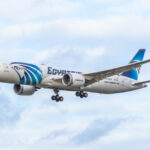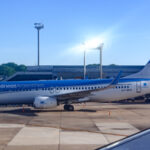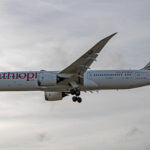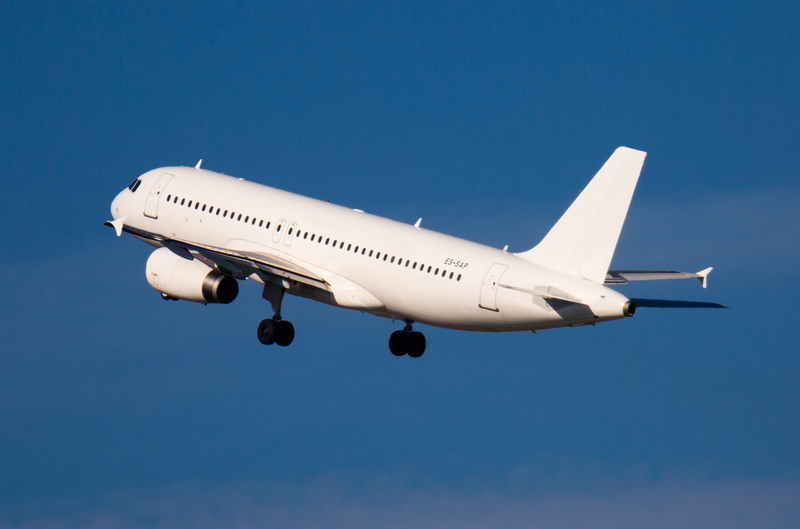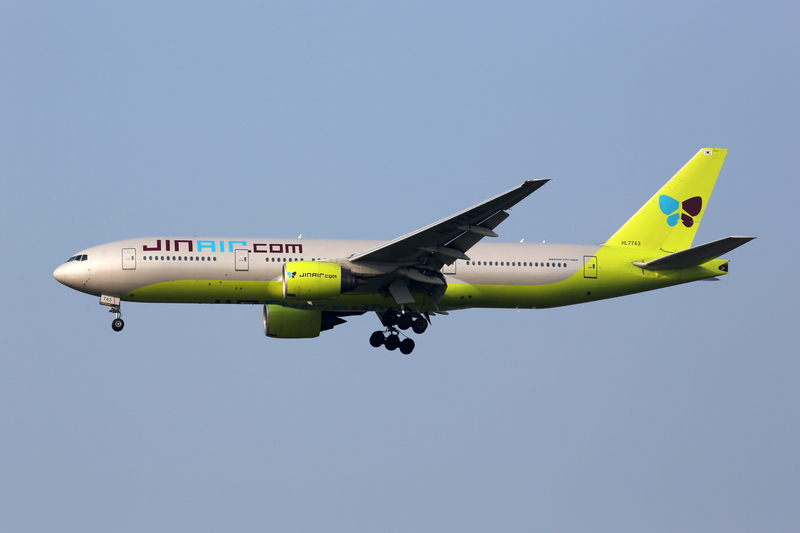Egyptair’s New A350-900s Poised To Unlock More US Routes
Key Takeaways
-
Egyptair expects its first Airbus A350-900s to arrive within weeks, with up to eight in service by late 2026.
-
The A350-900s are intended both to launch new US routes (including Los Angeles and Chicago) and to eventually replace Egyptair’s Boeing 777-300ER fleet.
-
The type’s lower fuel burn, long range, and modern cabin give Egyptair more flexibility on “thinner” ultra-long-haul routes from Cairo.
Egyptair’s First A350-900s Are Almost Ready
Egyptair has six Airbus A350-900s on firm order on top of its existing A330-900 commitment, for a total of 16 next-generation Airbus widebodies on the way over the next few years. The first A350-900, MSN 767 (expected to carry registration SU-GGE), has already appeared on Airbus’ production list and has been spotted in Toulouse in Egyptair colors. A second frame, MSN 776, is also in the pipeline.
The airline expects to have seven to eight A350-900s in service by late 2026, with initial deliveries arriving within weeks. Because of delivery delays, Egyptair has extended leases on its five Boeing 777-300ERs by around 18 months, with those jets now due to begin exiting the fleet from late 2026, once enough A350s are online.

ID 197231882 | Egypt Air © Dezzor | Dreamstime.com
How The A350-900 Fits Egyptair’s US Ambitions
Egyptair’s CEO, Captain Ahmed Adel, has made clear that North America—especially the United States—is a key growth market for the new A350-900s. Once a “viable number” of aircraft are in the fleet, the airline is looking at launching new routes such as Cairo–Los Angeles and Cairo–Chicago.
Today, Egyptair’s North American network includes:
-
Toronto (YYZ) – around five weekly flights, typically with Boeing 787-9s
-
Newark (EWR) – a thinner Dreamliner route, served a couple of times per week
-
New York JFK – the largest US station, currently served with Boeing 777-300ERs
-
Washington Dulles (IAD) – also operated with 787-9s
Egyptair is the only airline flying nonstop between Cairo and North America, and management has signaled an interest not just in adding new cities, but also in increasing frequencies on existing routes once the A350s are available. The combination of extra range and lower trip costs opens up routes that were previously marginal or uneconomical with older widebodies.
Egyptair’s A350-900 Order In Context
Egyptair’s June 2025 top-up order for six A350-900s built on an earlier decision to take 10 A330-900neos, giving the airline a 16-strong pipeline of new Airbus widebodies. These aircraft are central to a wider long-haul renewal program aimed at:
-
Replacing aging Boeing 777-300ERs as their leases expire
-
Supporting network growth to North America, Africa, and Asia
-
Reducing fuel burn and maintenance costs versus older jets
The A350-900 that Egyptair is acquiring is the standard long-range model, not the ultra-long-range A350-900ULR used by Singapore Airlines. Even so, the base A350-900 has a range of roughly 8,000–8,500 nautical miles, more than enough for nonstop services from Cairo to North America’s West Coast.
Where The A350-900 Sits In Egyptair’s Fleet
Egyptair currently operates a mixed Airbus–Boeing fleet of around 60–70 aircraft, including:
-
Narrowbodies
-
Airbus A320 family (A320neo / A321neo among them)
-
Boeing 737-800s, with 737 MAX 8s on order
-
-
Widebodies
-
Airbus A330-200/-300s (some earmarked for cargo conversion)
-
Boeing 777-300ERs (five aircraft, mid-life and due to leave from 2026 onward)
-
Boeing 787-9 Dreamliners
-
Once the A350-900s arrive in meaningful numbers, Egyptair will operate both of the world’s most popular modern mid-sized widebodies—the A350-900 and the 787-9—giving it flexibility to match aircraft size and range to specific long-haul markets.
In the medium term, the A350-900 is expected to become the backbone of the carrier’s longest and most premium routes, with 787-9s and A330-900s filling in other long- and medium-haul missions.
Why The A350-900 Is A Good Match For Egyptair
Several factors make the A350-900 a strong fit for Egyptair’s strategy:
-
Economics:
-
Around 25% lower fuel burn per seat compared to older widebodies like the 777-300ER and A340, especially on long-haul sectors.
-
Lower maintenance costs thanks to extensive use of composites and newer Rolls-Royce Trent XWB-84 engines.
-
-
Range & Flexibility:
-
Enough range for Cairo–West Coast US nonstop, while still being efficient on “thinner” ultra-long-haul routes that don’t justify a very large aircraft.
-
-
Cabin & Passenger Appeal:
-
A wider, quieter cabin than previous-generation jets, allowing for competitive business and economy products.
-
Lower cabin altitude and better humidity, which are increasingly important selling points on 10–13-hour flights.
-
Unlike some Gulf and Turkish carriers, Egyptair has not ordered the upcoming Boeing 777X, nor does it operate very large aircraft like the Airbus A380. Instead, it’s betting on mid-sized, long-range jets like the A350-900 and 787-9, which better match Egypt’s “thinner but far-reaching” long-haul demand profile.
Bottom Line
Egyptair’s incoming Airbus A350-900s are more than just a fleet upgrade—they’re the key to unlocking a bigger US footprint. With up to eight aircraft due by late 2026, the airline will finally have the right tool to add routes like Cairo–Los Angeles and Cairo–Chicago while also phasing out its aging 777-300ERs.
By pairing the A350-900 with its existing 787-9 fleet, Egyptair is positioning itself as a leaner, more efficient long-haul player. Given that no US or Canadian carrier flies to Egypt, the airline has a rare opportunity: use its new A350s to deepen its hold on North America–Cairo traffic and make it easier than ever for travelers to reach Egypt’s key business and tourist markets.

